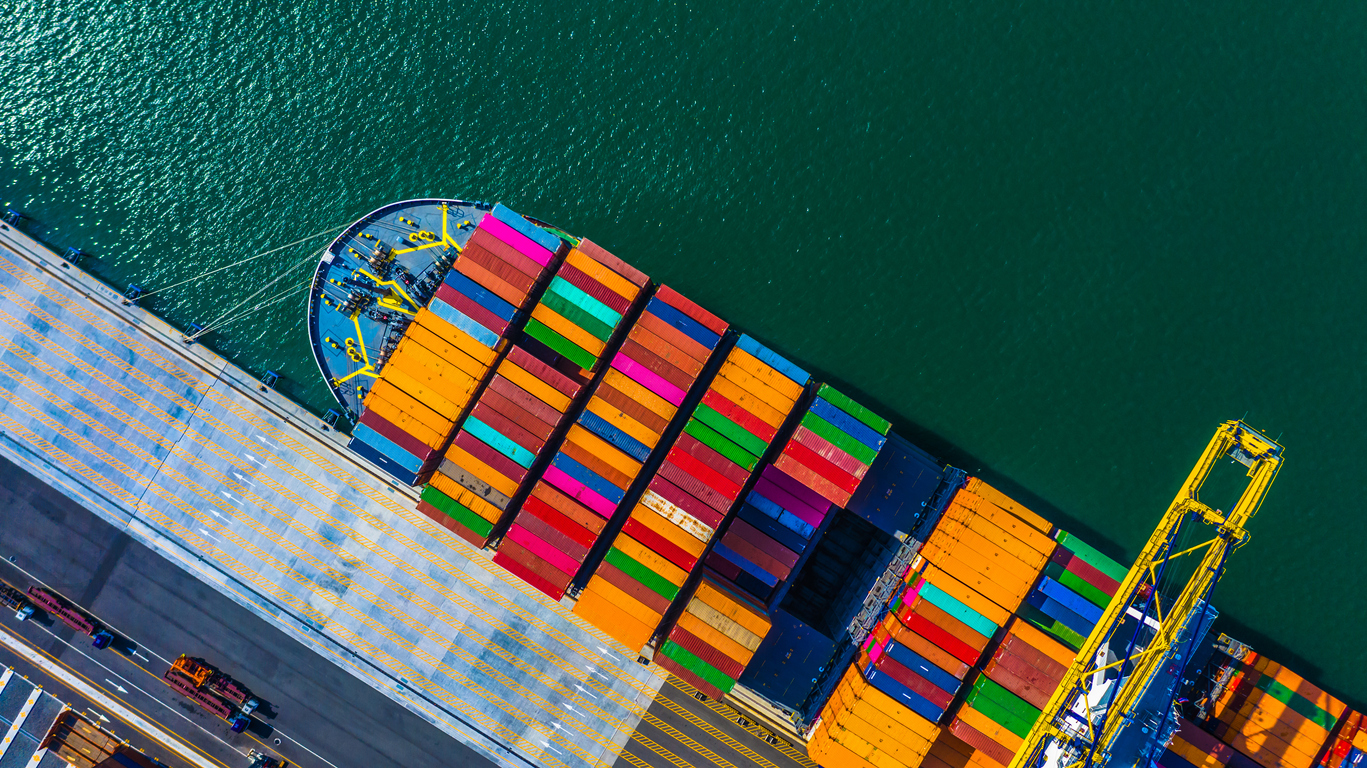Giant cranes overhead were stacking thousands of containers on a 1,200-foot cargo ship, but a pair of engineers were looking down, examining storm drains and asking where water flowed during rainstorms.
The engineers from Zurich Insurance Group are trying to prevent serious damage from storms at A.P. Moller-Maersk’s terminal at the Port of New York and New Jersey. The shipper and its insurer are aiming to mitigate risks made worse by climate change.
Zurich and some other insurers with big fleets of engineers, including Chubb and FM Global, are advising companies on how to fortify their properties against expected higher sea levels, storm surges, fiercer wind storms, wildfires and more intense rainfall. This was the latest in a series of visits to Maersk’s shipping operations worldwide by Zurich engineers.
The terminal, which sits behind an IKEA store and across the New Jersey Turnpike from Newark Liberty International Airport, was closed for a week in 2012 due to flooding from a storm surge caused by superstorm Sandy. Storms like Sandy are expected to be more frequent and more intense, Zurich’s analysis for Maersk indicates.
Zurich Resilience Solutions’ senior risk engineer, Nicolette Botha, pointing, inspected a roof to gauge its ability to withstand strong winds.
Many insurers and businesses had a wake-up call on climate change in 2017 when California wildfires and hurricanes Harvey, Irma and Maria made it one of the costliest years ever for the global property-insurance industry. According to broker Marsh’s Global Insurance Market Index, U.S. commercial-property rates have risen consistently for the past 22 quarters. In recent ones, inflation has been a factor.
Zurich offers its engineers’ advice on current risks to its commercial-insurance customers. It sells longer-term climate analysis through its two-year-old Zurich Resilience Solutions unit to both companies it insures and those it doesn’t. Maersk, a Zurich insurance client, sought analysis out to 2060.
A weekly must-read of news, analysis and exclusive data focused on the intersection of business, money and climate.
In an earlier part of the Maersk assignment, Zurich’s engineers had focused on the impact of wind to those tall cranes, including reviewing the company’s plans for shutting them down. Their attention turned to where torrential rains and storm surge might cause future problems.
During Sandy, berths and piers were damaged in the port, and saltwater intrusion knocked out electrical equipment and power transformers, leaving the terminal without power.
So Nicolette Botha, Zurich Resilience Solutions’ senior risk engineer, was trying to understand where water from a surge, or rainfall, would flow. She asked workers where rainwater puddled and where crucial equipment was stored. She took pictures of storm drains, electrical switchgear, transformers and computer servers.
She also climbed onto the flat roof of the building where the servers are housed to check its condition and drainage. She took note of how securely heating and ventilation equipment was installed.
Even if a policyholder is fully covered for a loss, “it is much better to prevent the claim to start with,” said Zurich Insurance Chief Executive Officer Mario Greco. Zurich Resilience Solutions “is one of the highest-growth businesses we have,” he said, and the company has added staff “because of the demand in the market.” The unit currently has more than 800 engineers.
In general, increased resiliency can help companies get better pricing than otherwise, insurance executives and brokers said.
Copenhagen-based Maersk said it hired Zurich for the climate-change analysis after the shipping company concluded that physical damage and business-interruption costs due to extreme weather were among its biggest risks.
At the New Jersey location, Botha said that her team expects to recommend such things as elevating certain equipment, adding flood barriers to keep water from entering buildings and replacing the roof she climbed onto to protect against “wind uplift.”
Over the past 20 years working as an engineer for property insurers, Botha said the job has changed dramatically. It now involves working with the U.N.’s Intergovernmental Panel on Climate Change’s projections “to look at future risks, not just the current risks…. A majority of our customers have an understanding they need to do something.”
A repair and maintenance facility at the Maersk terminal in Elizabeth, N.J.
The insurers’ initiatives come as climate activists are targeting banks and insurers to cut off financing and insurance coverage for fossil-fuel companies as a way to reduce carbon emissions and slow the effects of climate change.
The activists have mixed feelings about the insurers’ efforts to lower risks caused by climate change. “It is shortsighted and cynical for Zurich to support their own customers in adapting to the climate crisis while they continue to fuel the crisis for society at large through their fossil-fuel underwriting,” said Peter Bosshard, coordinator of a climate-activism campaign called Insure Our Future.
Many insurers say a wholesale quitting of sales to oil-and-gas producers would put the world’s economy at risk, because renewable energy isn’t ready to pick up the slack.
Sierra Signorelli, CEO Commercial Insurance at Zurich, said that the carrier over the past decade has reduced its market share as a provider of insurance to the fossil-fuel industry, and it restricts insurance for certain fossil-fuel businesses while expanding offerings for the renewable-energy sector. “We are committed to aligning our business with a net-zero emissions economy,” Signorelli said. “We strongly believe that the most effective way to achieve this is to work with businesses from all sectors as they adapt their business models.”













